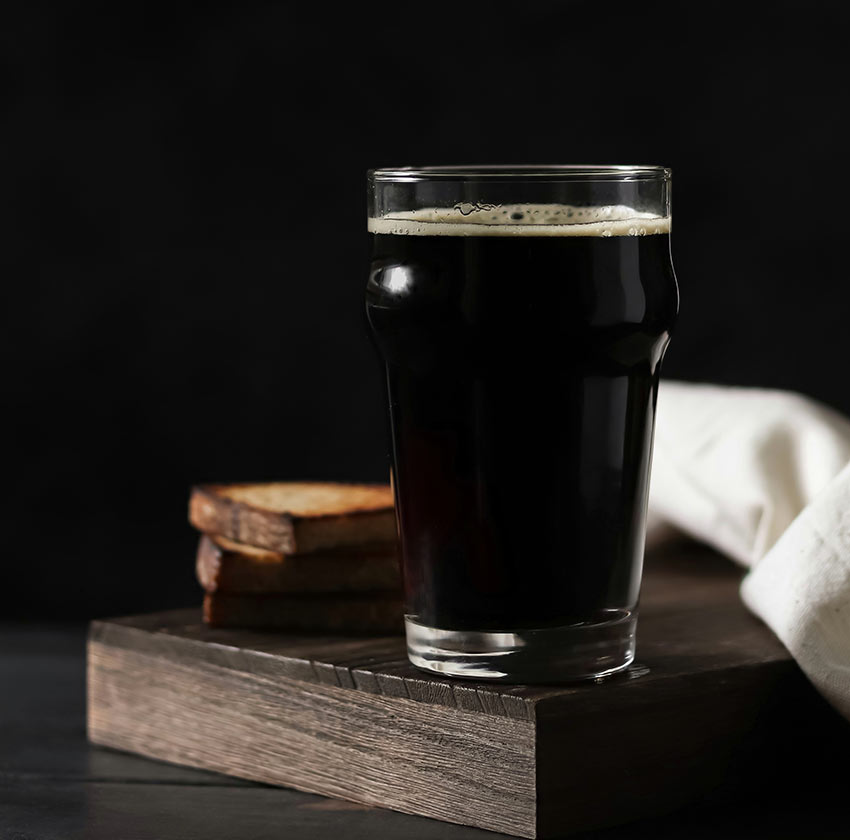The Origin of Porter
To understand how Baltic porter could have come about, one must understand the phenomenon of London porter. In the early 18th century, under pressure from rising taxes on malt, London breweries created a new beer. They used less malt, but more hops to prevent souring. They matured the beer for a long time in wooden barrels to get rid of any smoky aftertaste. The new beer quickly gained enormous popularity, especially among one group of consumers – porters. They were city porters, unloading ships and carrying packages around the city. It was from their profession that the new beer was named porter.


Porter is a global beer
The popularity of porter was so great that the breweries that brewed it quickly became the largest and richest breweries in the world. Huge wooden vats were built for maturing porter, some so large that 200 people could feast in them. The breweries brewing porter were also the most modern in the world, introducing such innovations as the steam engine, thermometer and saccharometer. And since these were the times of the British Empire, the market for porter was not limited to London or Great Britain. Porter was the first beer to be exported all over the world, including the countries of the Baltic Sea basin.
English Porter on the Baltic
In the mid-18th century, English porter brewed by large, rich and modern London breweries was synonymous with luxury, a top-shelf product. It was drunk at the Russian Tsar’s court, and served in all major inns in large cities. It is therefore not surprising that some breweries tried to brew porter at home. One of the first, or maybe even the first, to attempt this was the Swedish brewer Sven Roos, working at the Nürnbergs Bryggeri brewery in Stockholm. He brewed porter in 1774. Interestingly, at that time the term Engelskt Öl, or English beer, was used for it. In 1790, the first brewery brewing exclusively porter was established in Gothenburg, founded by the Scot William Knox. At a similar time, Englishman Noah Cazalet founded a porter brewery in St. Petersburg. In Poland, the first porter was probably brewed by Karol Wilhelm Schmidt, around 1800, in a brewery in Grudziądz. However, in the opinion of consumers, English porter was much better and, despite its much higher price, was more willingly chosen than its local equivalent.
Napoleon and the Russians
In 1806, Napoleon Bonaparte imposed a Continental Blockade that stopped the export of porter from England. This led to a rapid expansion of porter breweries, which apparently worked so well that some brewers were accused of illegally importing English porter. After Napoleon’s fall, exports were quickly resumed, and porter production in Poland stopped until 1824, when this time the Russians imposed a blockade of English goods. And again porter breweries were established, this time on a larger scale. In Warsaw alone, about a dozen such breweries were established, including the Fabryka Porteru i Piwa Angielskiego. Porters were successful enough that when the blockade was lifted in 1831, domestic production was maintained. Around the mid-19th century, porter brewed in Poland began to be referred to as domestic porter, to distinguish it from English porter.
Porter and the lager revolution
Porter has always been a top-fermented beer and was produced in continental breweries. In the mid-19th century, another method quickly gained popularity – bottom fermentation. Originally from Bavaria, but it gained popularity thanks to the creation of Pilsner Urquell beer – the first pils. The new method of beer production quickly became the standard in most breweries, although those brewing porter resisted it for quite a long time, some even to this day, such as the Finnish Sinebrychoff. At the moment, we are not able to say when and where the first bottom-fermented porter was created. We can assume that it happened in the second half of the 19th century, in one of the new breweries built on the German model.
Baltic Porter as a New Style
Throughout the history of porter brewing on the continent, this beer was simply called porter, or domestic porter. It was not until the 1990s that the style was first referred to as Baltic porter. And although the first to use this term was Bill Yenne, it gained popularity thanks to Michael Jackson. Both Bill and Michael noticed how different the porters brewed in the countries of the Baltic Sea basin were from those they knew from the British Isles.
Baltic Porter Today
Thanks to the so-called beer revolution, Baltic porters have gained a second youth. Today, they are brewed in many variations (more on this here), not only in the countries of the Baltic Sea basin.
